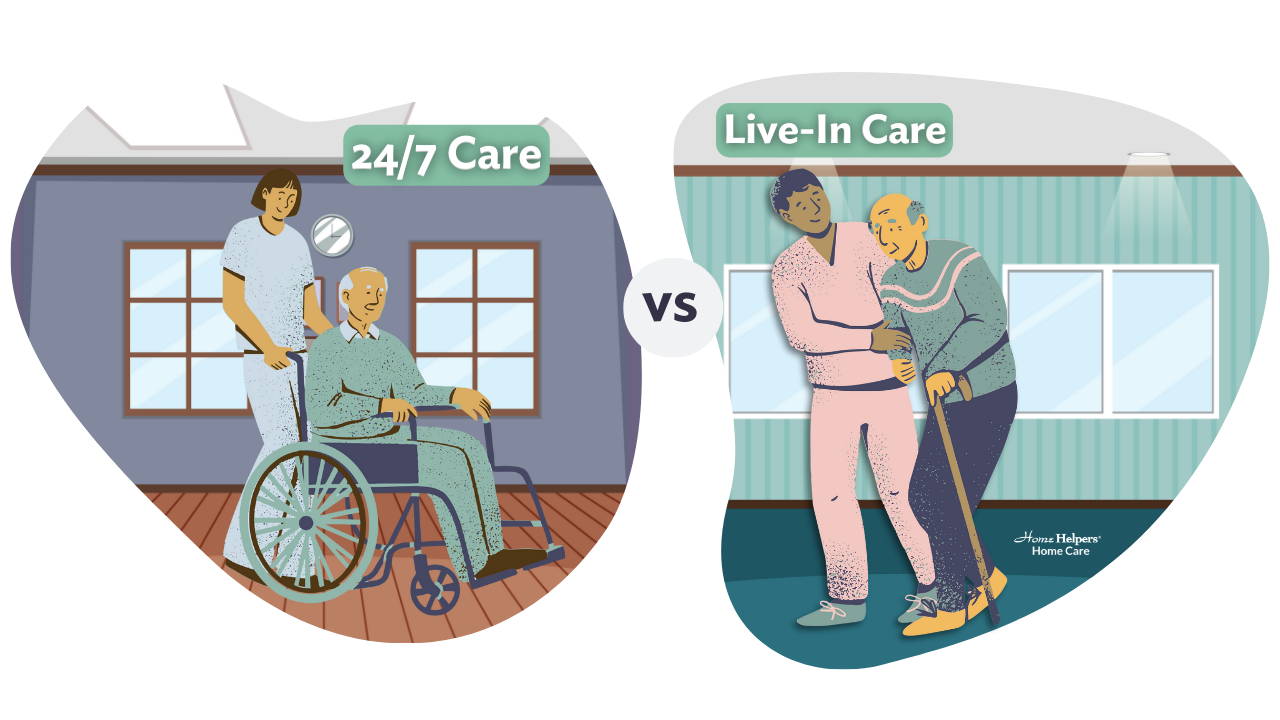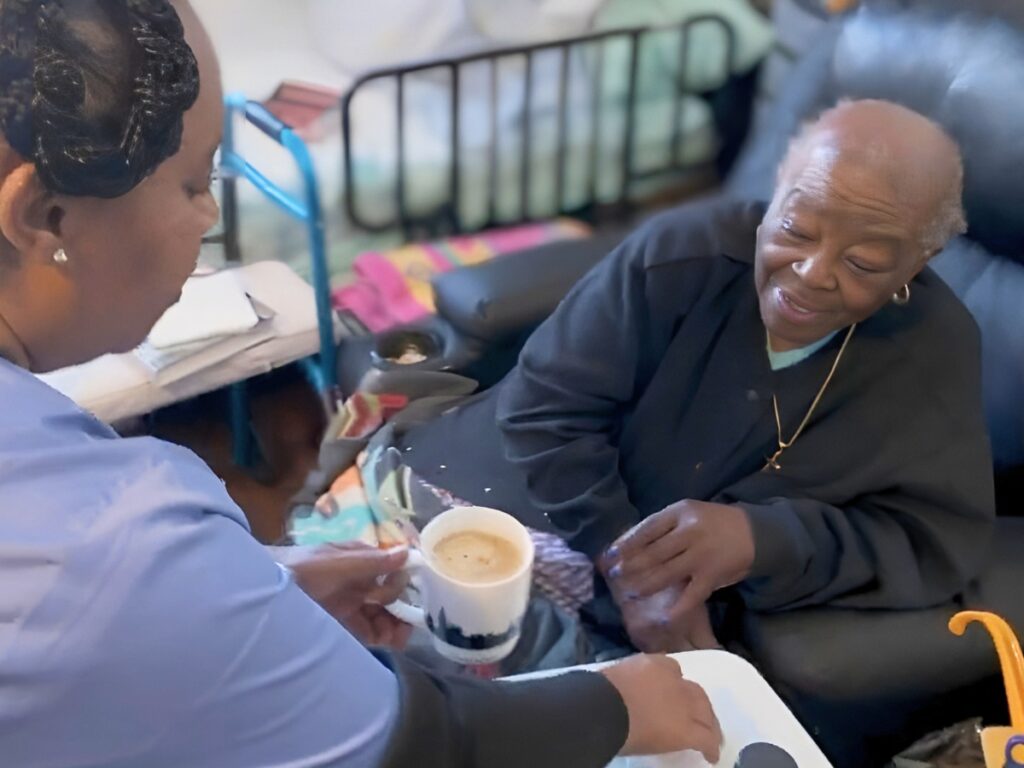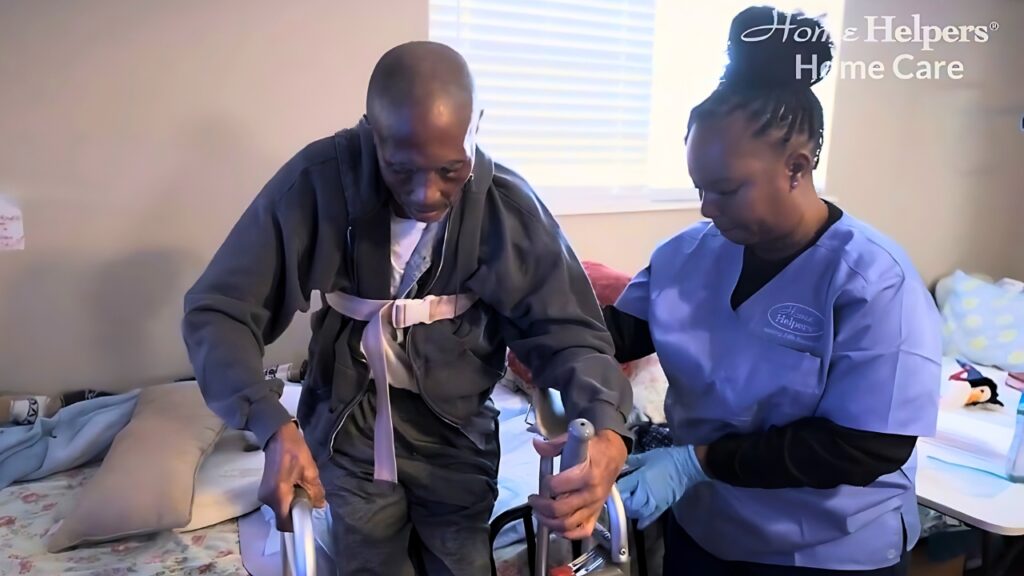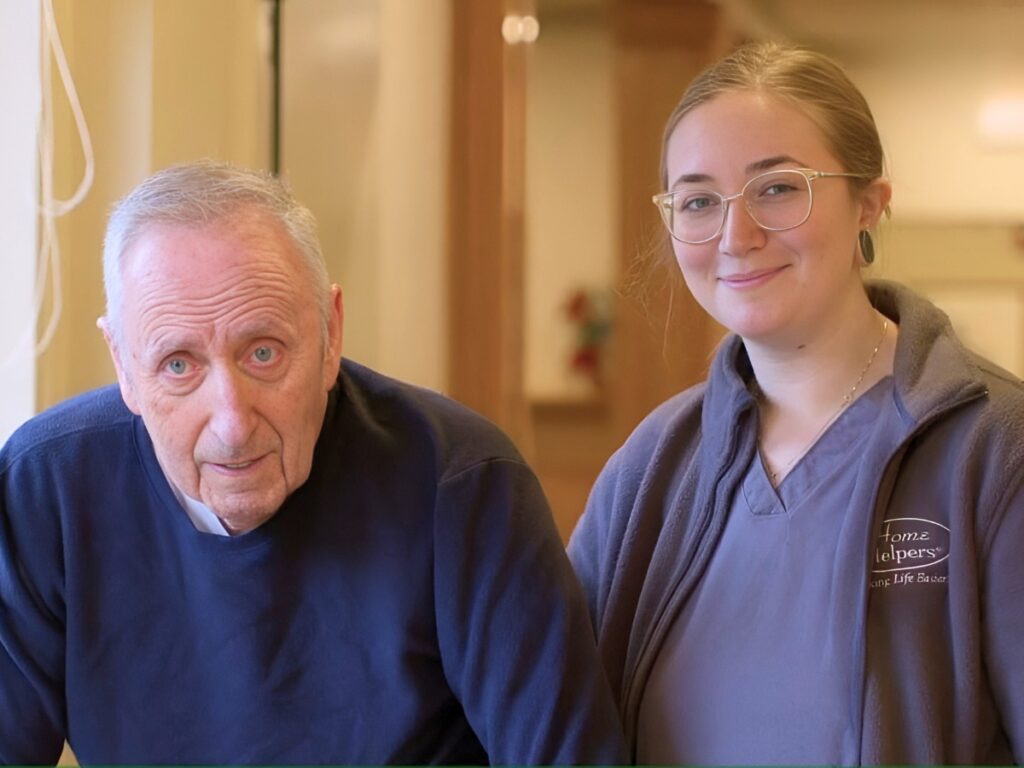Home Care Showdown: 24/7 Care vs. Live-In Care

Author: Jonathan Marsh
Sometimes individuals require 24/7 care or Live-In care options to live safely at home. Family caregivers frequently use these options for homebound individuals. These individuals often need assistance with daily activities like bathing, dressing, light housekeeping, meal preparations, and more. Examples of when these care options may be necessary include rehabilitation, high risk of readmission, medical conditions, safety concerns (e.g., fall risk), and end of life.
In this blog, we will discuss the key aspects of each care option. In this blog, we will discuss key aspects of each care option. This includes how quickly care can start, the number of caregivers, alertness and sleep time, and cost.
Understanding 24/7 Care and Live-In Care
There are many reasons why someone may need a caregiver in the home at all times. Today, we’re here to discuss the differences between two options for in-home care: 24/7 care and live-in care. We'll help you understand the pros and cons of each so you can make an informed decision that best suits your loved one's needs.
Why Might Someone Need 24/7 or Live-In Care?
Rehabilitation and High Risk of Readmission:
Individuals recovering from injuries, surgeries, or medical procedures may require 24/7 or live-in care. This is especially true if they are at high risk of readmission to the hospital. Having a caregiver present can help prevent complications and ensure the individual follows their rehabilitation plan diligently. This reduces the risk of returning to the hospital and supports a smooth recovery process.
Medical Conditions:
People with severe medical conditions may need a caregiver in the home at all times. This is especially true for the chronically ill who require constant care and monitoring. A great example medical condition affecting older adults is advanced Alzheimer’s.
Safety Concerns:
Individuals with a history of falling or wandering may require constant supervision. Caregivers can help with activities of daily living to keep the individual safe at all times. Having a caregiver present provides peace of mind for family members, knowing their loved ones are safe.
End of Life:
When someone has a limited life expectancy and is on hospice, they often receive 24/7 care. This care provides comfort and emotional support.
What is 24/7 Care?

24/7 care involves an alert caregiver at all times, 24 hours a day, 7 days a week. This type of care requires multiple caregivers who rotate shifts to provide continuous support, monitoring, and assistance. Another term used to describe 24/7 care is "round-the-clock care".
What is Live-In Care?

Live-in care involves a caregiver residing in the home. Typically, this means one caregiver provides care and has designated times for sleep and breaks. The caregiver must have uninterrupted time to fall asleep and rest properly. A variation of the live-in model can involve multiple caregivers, which we will discuss later.
Key Comparisons: 24/7 Care vs. Live-In Care

1. How Quickly Care Can Start
- 24/7 Care: Can start more quickly since caregivers are added to the schedule and return to their personal homes after their shifts.
- Live-In Care: Takes more time to arrange because a caregiver needs to move into the home. Compatibility with the individual is very crucial. The pool of available caregivers is also smaller.
Winner: 24/7 Care
2. Number of Caregivers
- 24/7 Care: Involves multiple caregivers, typically at least two per day, and possibly more throughout the week.
- Live-In Care: Usually involves one caregiver, offering more companionship and stability over time. However, a backup plan is necessary if the caregiver becomes sick or needs time away.
Winner: Live-In Care
3. Alertness and Sleep Time
- 24/7 Care: Caregivers are always alert and available, with no required sleep time.
- Live-In Care: Caregivers have mandatory sleep times and breaks, as required by law.
Winner: 24/7 Care
4. Accommodations
- 24/7 Care: No special accommodations are needed for caregivers since they do not sleep in the home.
- Live-In Care: Requires accommodations for the caregiver, such as a private bedroom.
Winner: 24/7 Care
5. Cost
- 24/7 Care: More expensive due, because of the need for multiple caregivers. The continuous care provided demands a larger number of caregivers, which results in higher costs. Charges are typically based on an hourly rate.
- Live-In Care: More budget-friendly with a single caregiver and less continuous care. Charges are typically based on a daily rate.
Winner: Live-In Care
Conclusion
No one-size-fits-all answer exists when choosing between 24/7 care and live-in care. The best choice depends on your loved one's specific needs, your budget, and the timeline for starting care. Discuss these options and factors such as the hourly rate with family members that are involved to make the best decision. These in-home care options can provide a viable alternative to an assisted living facility or skilled nursing facility.
Variation of Live-In Care
A variation of the live-in model involves multiple caregivers. For instance, one live-in caregiver can provide care on specific days, while another takes over for the remaining days. This can be a more cost-effective solution compared to 24/7 care.
Contact Us
Home Helpers Home Care of Bradenton is here to help you make the right decision for your family. We provide compassionate and professional caregivers tailored to your unique situation. Contact us today to discuss your options and provide the best care for your loved ones.

